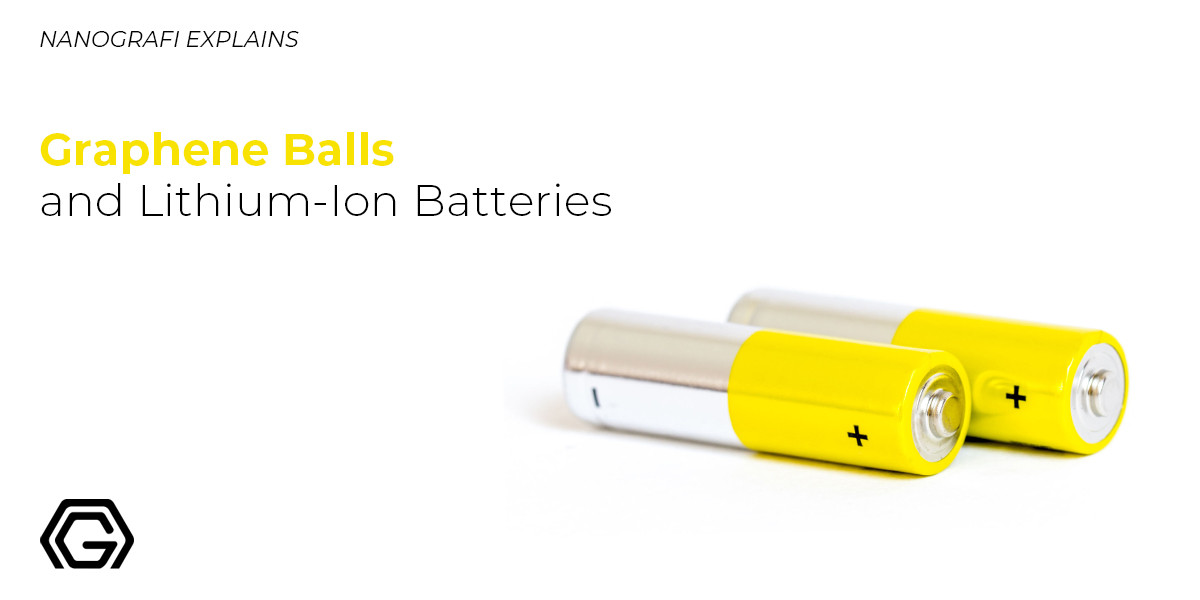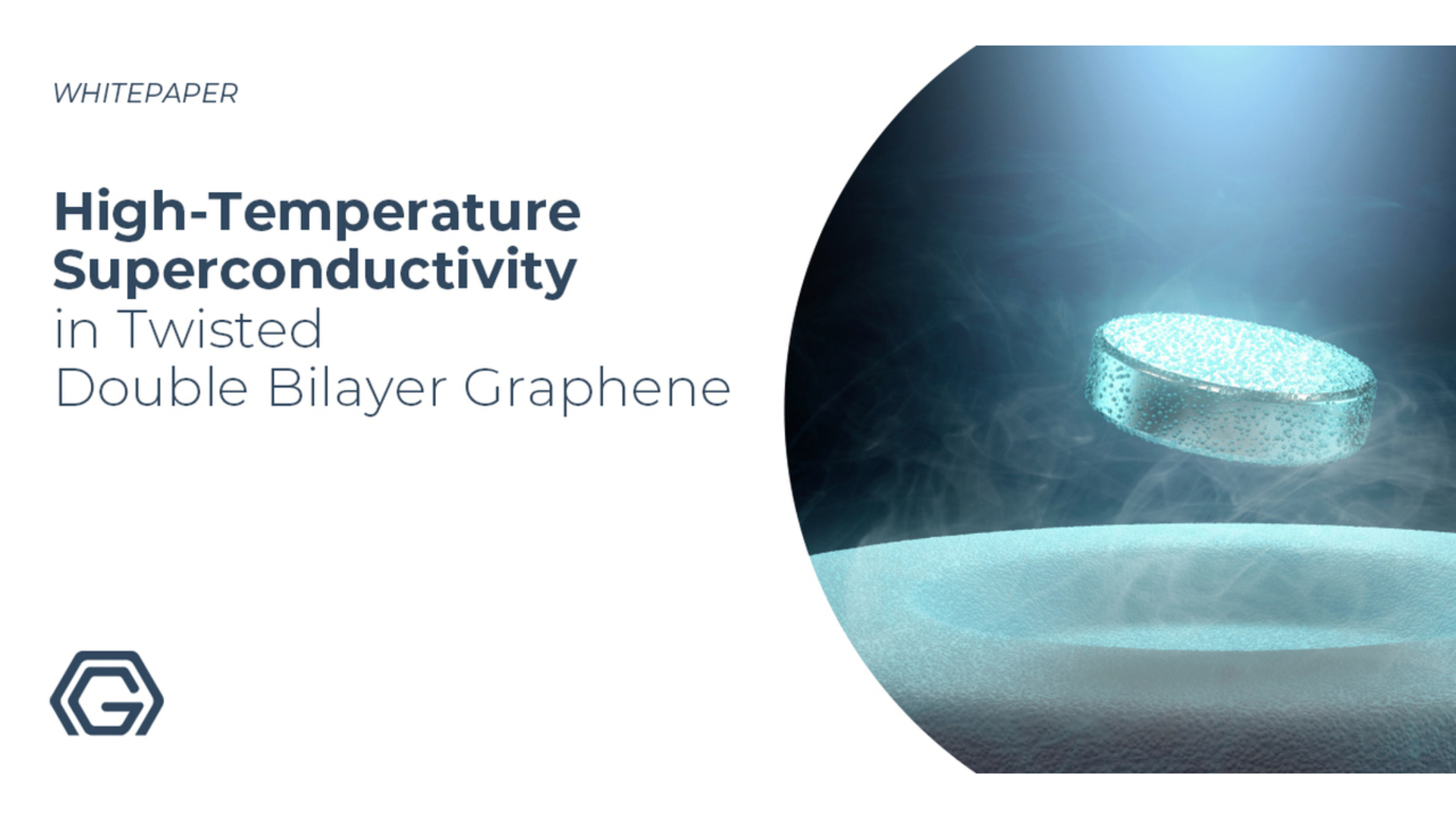Graphene Balls and Lithium-Ion Batteries
Lithium-ion batteries are widely utilized in commercial products for energy storage purposes. Even though they are highly preferred, lithium-ion batteries require further improvements to keep up with the energy requirements of rapidly developing technological devices.
Graphene balls have recently been suggested as promising materials for the necessary improvement. Graphene ball technology provides better cycle life, improved charging speed, and efficiency to lithium-ion batteries.
Introduction
The rapid technological developments in 21. century is impressive. Novel discoveries such as electric cars, touch screens, and powerful processors have given people opportunities that they didn’t even know they needed. All of these technologies make our life easier and more enjoyable. But on the flip side, they consume more and more energy as they get more sophisticated and complex. However, it is no secret that energy is a depleting resource and one of the most important problems in the world. This is why energy storage systems have gained importance with the development of technological devices. One of the most important energy storage systems is electrochemical batteries. Even though there are several different versions of electrochemical batteries, the lithium-ion battery is the most commonly utilized technology in the industry. We utilize lithium-ion batteries in our mobile phones, laptops, tablets, and they are even considered for electric cars. Hence, a lot of research is put into improving the efficiency, life time, and charge/discharge cycle of lithium-ion batteries. This improvement is found to be closely related to the performance of materials used in the battery cell. To achieve rechargeable lithium-ion batteries (LIBs) with superior electrochemical properties, electrode materials with novel and functional structures exhibiting higher specific capacities, faster rate performances, longer cycle life, and lower cost are required. Electrochemically active metals and metal oxides showing high theoretical capacities such as Sn, Si, Li, SnO2, and Fe3O4 are widely used in lithium-ion batteries. However, these materials show poor cycle life and rapid capacity decay due to significant specific volume change and low conductivity. This is why materials with high electrical conductivity and ductility are required for the improvement of lithium-ion batteries. Naturally, graphene -the wonder material of 21. century- comes to mind when thinking about a material that could make difference. Graphene has been utilized in lithium-ion batteries in several different structures to improve the performance. Lately, graphene balls have been suggested to be used as anode or cathode material in lithium-ion batteries. The incorporation of graphene balls is expected to provide higher energy storage capacity and faster charging speed.
What is Graphene Ball Technology?
Graphene has attracted attention in energy storage systems because of its high surface area, mechanical integrity, high electrical conductivity, and chemical properties. Up until recently, a large portion of studies on graphene and batteries have utilized graphene sheets at the anode or cathode regions. Lately, graphene balls are being considered as promising materials for lithium-ion batteries. Utilizing graphene balls overcomes the aggregation and restacking problems observed between graphene sheets while improving interfacial stability with the electrolyte and the electronic conductivity over the electrode. Even though the technology is relatively new, a number of different versions of graphene balls have been investigated. Graphene balls can be used as decorated hollow shells, crumpled spherical structures, or encapsulating shells around electrochemically active materials.
For example, Fe3O4 decorated hollow graphene balls have been suggested as a promising anode material. The use of Fe3O4 is quite common in lithium-ion batteries due to its high theoretical capacity, low potential, nontoxic nature, and low cost. Evenly distributed Fe3O4 nanocrystals on graphene balls offer high capacity while the special structure of graphene balls prevents aggregation during lithium-ion intercalation/deintercalation cycles. As a result, such anode material has provided high initial discharge and charge capacities, great cycling, and rate performances. The Fe3O4 remained uniformly dispersed over the graphene ball without aggregation even after long-term cycling.
In a different approach, crumpled graphene balls are suggested to prevent dendrite formation in lithium-ion batteries. Dendrites are small branched structures that are formed inside lithium-ion batteries in time. These structures form due to the nucleation of lithium ions on the electrode surfaces and cause serious harm by disturbing the structure and increasing unwanted reactions between the electrolyte and the lithium. Crumpled graphene balls prevent aggregation and form a closely packed solid with highly uniform thickness and pore-size distribution. They offer a suitable environment for Li ion diffusion leading to high Coulombic efficiency of 97.5% over 750 cycles (1,500 hr). These dendrite-free lithium-ion batteries present a promising future for the practical use of Li-ion batteries.
Graphene balls can also be utilized to encapsulate high capacity metal or metal oxides. Similar to decorated graphene balls, this configuration also prevents aggregation of electrochemically active materials improves electrical conductivity and resistance to volumetric fluctuations. Several different metals and metal oxides have been utilized in this configuration. However, silica (SiOx )/graphene balls based lithium-ion batteries have recently been patented and developed by Samsung Advanced Institute of Technology (SAIT). Graphene balls grown by chemical vapor deposition were coated on cathode material via scalable Nobilta milling and as the anode material. The SiO x nanoparticles play a crucial role in multiple aspects, such as avoiding the formation of silicon carbide (SiC) layer at the SiO x –graphene interface during graphene growth, ensuring uniform coating of GB onto the cathode material and providing a high specific capacity when GB is used as an anode material. Graphene ball assembly prevents undesired reactions and offers efficient conductive pathways. With the incorporation of graphene balls, the energy density of batteries is improved by 27.6%. The resulting batteries show improved cycle life, charging speed with 12 minutes for a full charge, and a 45% boost in capacity. Furthermore, this graphene ball based battery maintains thermal stability at 60°C which is one of the key concerns when it comes to the batteries of electric vehicles. Another promising graphene ball/metal oxide assembly is achieved by encapsulating Co3O4 nanoparticles with graphene. This graphene ball assembly shows remarkable lithium-storage performance, including highly reversible capacity and excellent cycle performance. Even though Co3O4/graphene balls have not come a long way as silica/graphene ball assembly, they are promising options as anode materials for lithium-ion batteries. These developments show that graphene balls are promising materials for the improvement of lithium-ion batteries.
To get more information about the properties of graphene,
you can read our blog post here.
Conclusion
Along with technological improvements, the importance of energy storage technologies has also increased. Since the complex technologies and powerful technological devices require more and more energy with their development, efficient and fast energy storage systems have become crucial. Lithium-ion batteries are one of the most commonly used energy storage systems in the industry due to their promising properties. However, the current performance of lithium-ion batteries cannot meet the requirements of recent technologies. The improvement of lithium-ion batteries is greatly related to the use of enhanced materials to overcome existing problems. Amongst the various materials offered as a solution, graphene balls are one of the newest and most promising candidates. Graphene balls can be decorated by electrochemically active materials, can be encapsulating such materials, or can have a crumpled structure. Electrochemically active materials include metals and metal oxides such as Sn, Si, Li, SnO2, SiOx, CoOx, MnOx, and Fe3O4 with high theoretical capacities. Regardless of the configuration graphene balls prevents aggregation and undesired volume fluctuations; improves cycle life, charging speed, and electrical conductivity. Some of the intriguing studies utilize Fe3O4 decorated hollow graphene balls, crumpled hollow graphene balls, silica, and Co3O4 containing graphene balls. Fe3O4 decorated hollow graphene balls are used as anode material providing improved performance. Crumpled graphene balls prevent dendrite formation and offer a suitable environment for Li ion diffusion. Recently, researchers at Samsung Advanced Industry of Technology have developed and presented a promising lithium-ion battery that uses silica/graphene balls as anode material and coating material on the cathode. The resulting battery shows great charging speeds with a full charging time of 12 minutes and improved volumetric energy density. All of these studies and the practical application by Samsung show that graphene balls are promising candidates for the improvement of lithium-ion batteries.
To get more information, you can visit Blografi.
References
1.Yang, S., Feng, X., Ivanovici, S., & Müllen, K. (2010). Fabrication of graphene‐encapsulated oxide nanoparticles: towards high‐performance anode materials for lithium storage. Angewandte Chemie International Edition, 49(45), 8408-8411.
2.Jamaluddin, A., Umesh, B., Chen, F., Chang, J. K., & Su, C. Y. (2020). Facile synthesis of core-shell structured Si@ graphene balls as a high-performance anode for lithium-ion batteries. Nanoscale, 12(17), 9616-9627.
3.Liu, S., Wang, A., Li, Q., Wu, J., Chiou, K., Huang, J., & Luo, J. (2018). Crumpled graphene balls stabilized dendrite-free lithium metal anodes. Joule, 2(1), 184-193.
4.Choi, S. H., & Kang, Y. C. (2014). Fe3O4-decorated hollow graphene balls prepared by spray pyrolysis process for ultrafast and long cycle-life lithium ion batteries. Carbon, 79, 58-66.
5.Son, I. H., Park, J. H., Park, S., Park, K., Han, S., Shin, J., ... & Choi, J. W. (2017). Graphene balls for lithium rechargeable batteries with fast charging and high volumetric energy densities. Nature communications, 8(1), 1-11.
6.Samsung Develops Battery Material with 5x Faster Charging Speed. (n.d.). Retrieved October 21, 2020, from https://news.samsung.com/global/samsung-develops-....
Recent Posts
-
Advanced Materials for Unmanned Aerial Vehicle (UAV) Protection Against Laser
Consider a UAV on a critical mission, rendered inoperative by a sudden laser attack. With the increa …26th Jul 2024 -
Simulation and Modeling of Material Properties
Our world is composed of a dazzling array of materials, each with its own unique properties that dic …19th Jul 2024 -
Advanced Coatings for Superior Corrosion and Wear Resistance
Corrosion and wear pose significant challenges across various industries, leading to substantial eco …12th Jul 2024






